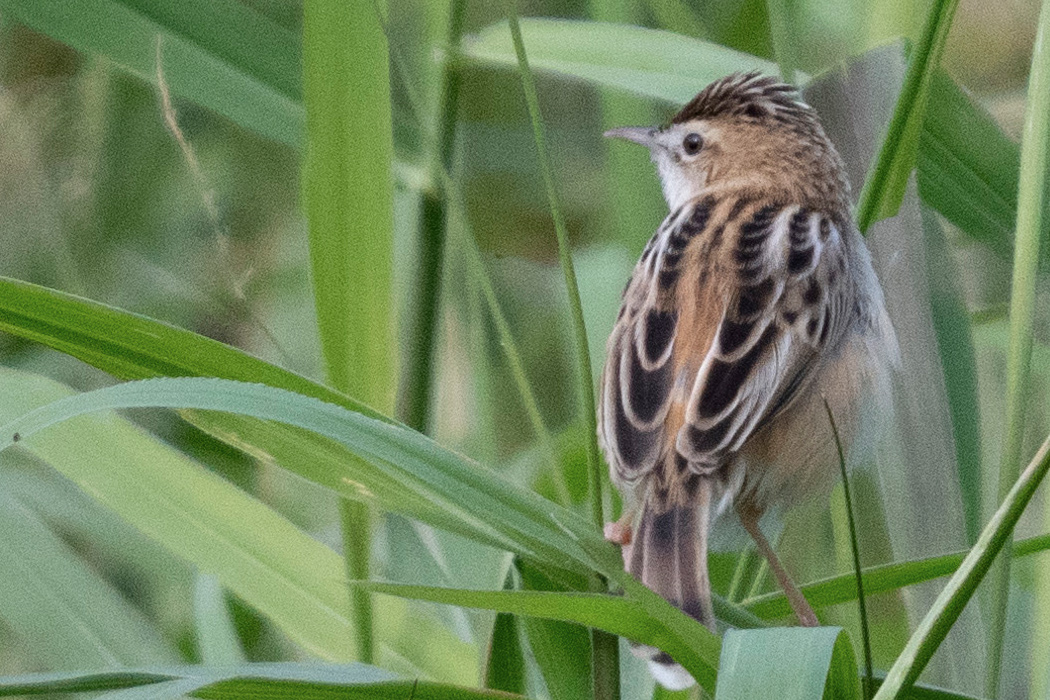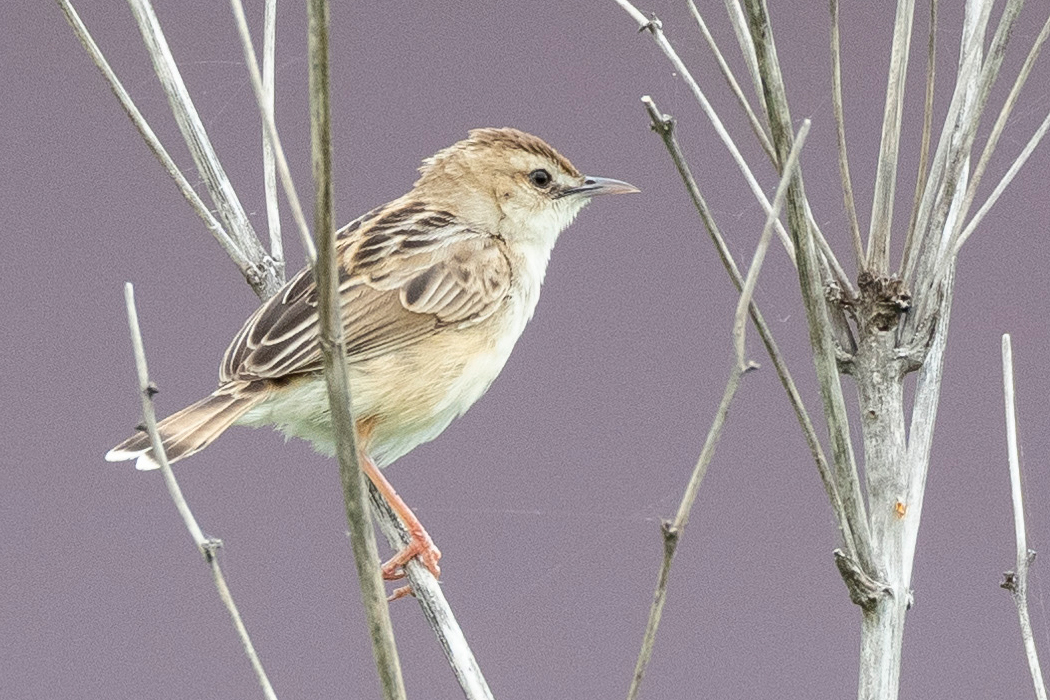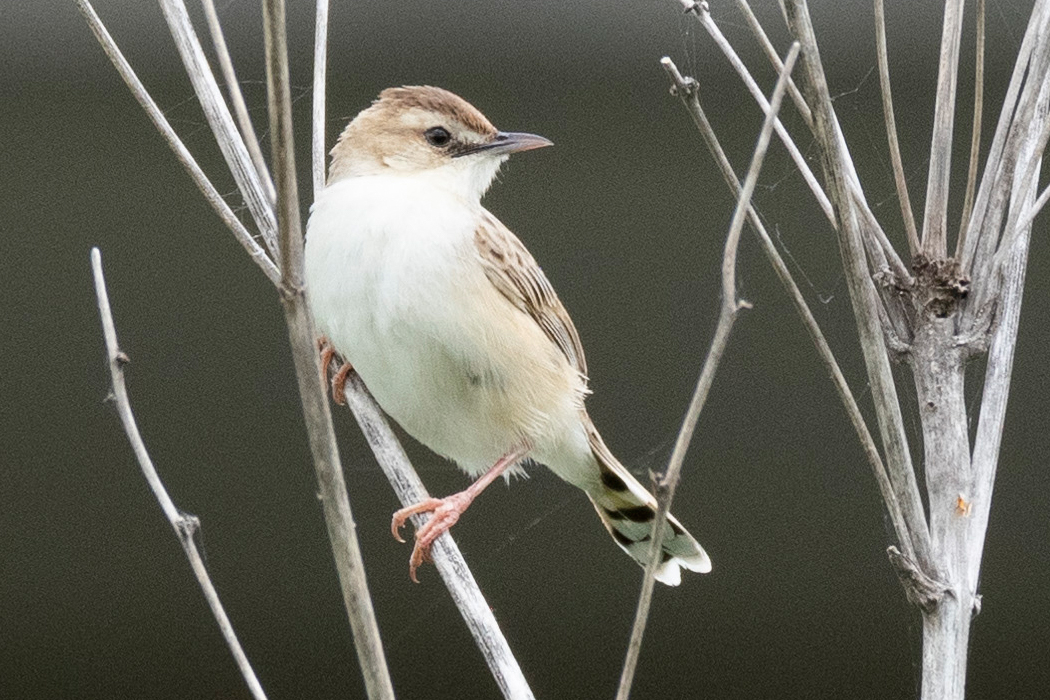
Zitting Cisticola
spread legs for balance.
| Scientific name | Cisticola juncidis |
| English name | Zitting Cisticola |
| Japanese name | 雪加 |
| Classification | Aves |
| Classification details | Passeriformes Cisticolidae |
| Full length | 13cm |
| Distribution | Distributed from the African continent to the low latitudes of the Eurasian continent. |
Characteristics
The upper surface is brown, and the wings and tail feathers are mixed with black. The sides of the body are light brown, and the chest and belly are yellowish brown, almost white. The eyebrows are white and the top of the head is blackish. The beak is thin and short. The legs are light flesh colored.
Calls
During the breeding season, they fly and cry with a “hi-hi-hi” sound.
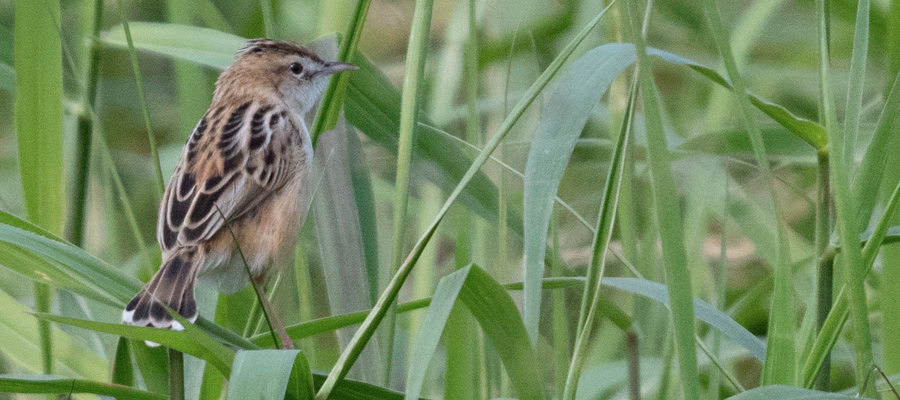
Ecology
Inhabits reed beds near riverbeds and paddy fields. It feeds on insects and spiders. They are polygamous, and males build oval nests in grasslands to attract females. Males sometimes fly over their territory while chirping, but they usually hide in the grasslands.
Habitat
near paddy fields
I took a picture of it perched on a low branch near a paddy field. It had spread its legs in a Zitting Cisticola-like pose, but it flew away immediately.
grassland
I heard a relatively loud "hi-hi", so I searched around the grassland and found a secca perched on the grass. It was there for a while.
Pictures
Introducing a picture of Zitting Cisticola.

Picture book

zebra turkeyfish
Beautiful fan-shaped pectoral fins.......ead more.

Streaked Shearwater
eat anchovies on the surface of the sea.......ead more.

Indo-Pacific mantis
Can be seen until late autumn. It is characterized by the white stripes on the forewings.......ead more.
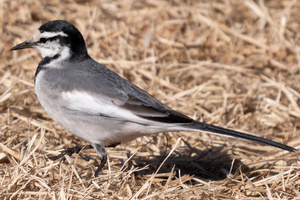
White Wagtail
A familiar bird that raises and lowers its tail.......ead more.
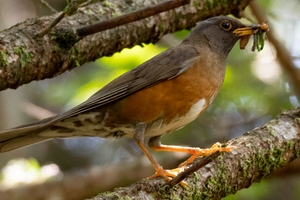
Brown-headed thrush
It was called "Chajinai" (written as "brown thrush").......ead more.


